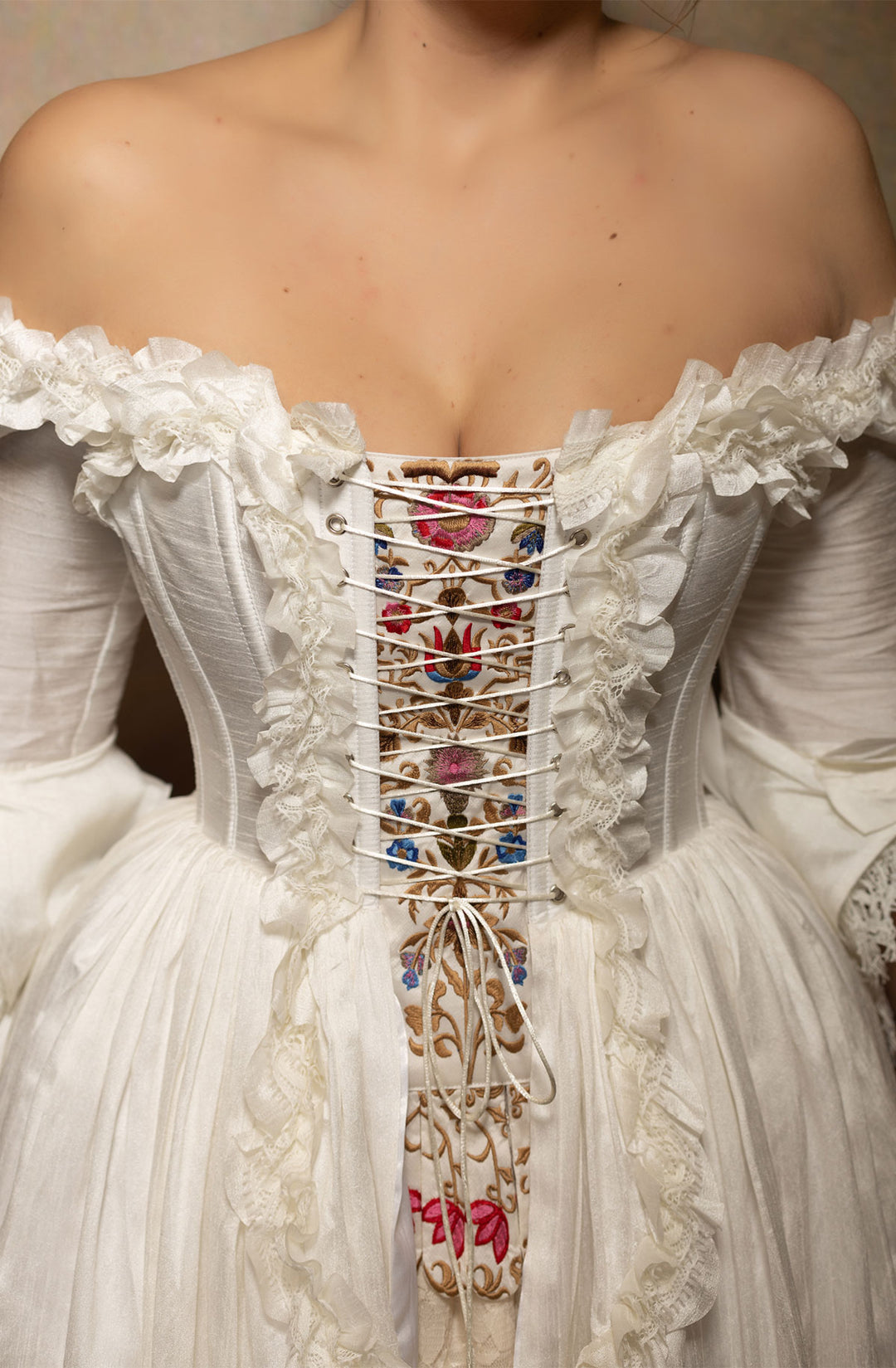
A decorative stomacher is an embellished, triangular panel that fills the front opening of a woman's gown or corset. Typically stiffened and elaborately decorated, stomachers were generally integrated into the corset, worn from the late Middle Ages to the early 19th century. Oftentimes, they were embroidered, adorned with pearls and gems, or painstakingly stitched with precious metals, making it a symbol of wealth and status. It served both functional and aesthetic purposes in that it reinforced the structure of the gown and corset to create the desired silhouette, while providing a captivating focal point on the dress.
Decorative stomachers, a precursor to the corset, were traditionally worn by women of the upper class during the 16th to 18th centuries. Adorned with lavish fabrics and intricate detailing, the stomacher was a triangular panel that filled the front opening of a woman's gown or bodice. The opulence and grandeur of the wearer's stomacher served as a vivid statement of their wealth and social standing. Royals, including Queen Victoria herself, were known to favor the stomacher, utilizing it as an ostentatious display of power and status. It was common amongst aristocratic circles for decorative stomachers to be abundantly decorated with precious gems and pearls, adding a touch of luxury to the wearer's ensemble.
In the vast expanse of fashion history, the use of decorative stomachers with corsets seems peculiarly romantic and extravagantly detailed, even in a time when minutiae in fashion was paramount. In reality, however, the decorative stomacher played a practical as well as aesthetic role in a woman's attire.
The stomacher was essentially a central panel for the bodice, often heavily embroidered or embellished, that complemented the narrowing sartorial effects of a corset. It was usually triangular in shape, extending from the decolletage to the lower edge of the corset, creating a flat, unbroken expanse across the front of the torso. This not only served an aesthetic function, by providing a canvas for detailed designs consistent with the period's love for intricate fashion, but also added an extra layer of stiffening over the abdomen.
The corset's primary role was to shape the body, achieving the ideal silhouette of an hourglass figure. Yet the intensity of the constriction made by these corsets could, at times, be uncomfortable. This is where the decorative stomacher played a pivotal role. It provided a functional benefit by acting as an additional barrier between the corset's lacing and the wearer, reducing the pressure of the tightly wound laces against the skin and adding an extra dimension of comfort.
Moreover, stomachers allowed for sartorial variety. Even when corsets were worn repeatedly, the interchangeable nature of the stomacher meant that it could be swapped out dependant on occasion, mood, or attire, effectively changing the entire front panel—or face—of the dress.
In storied pages of fashion history, the delightful harmony between decorative stomachers and corsets showcases the intricate marriage of form and function, serving bespoke needs of comfort, practicality, and style.






Leave a comment